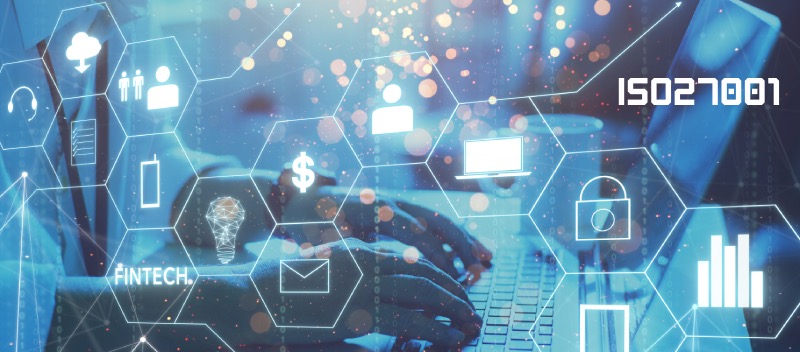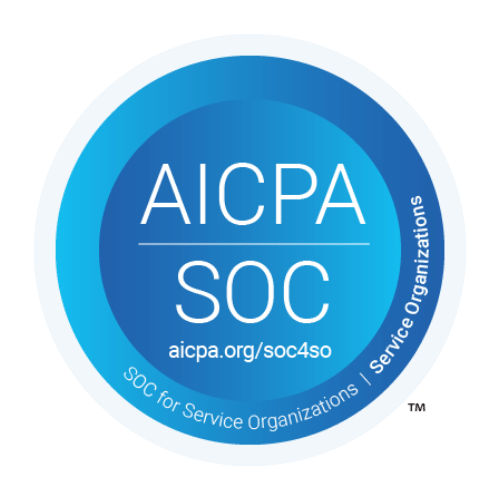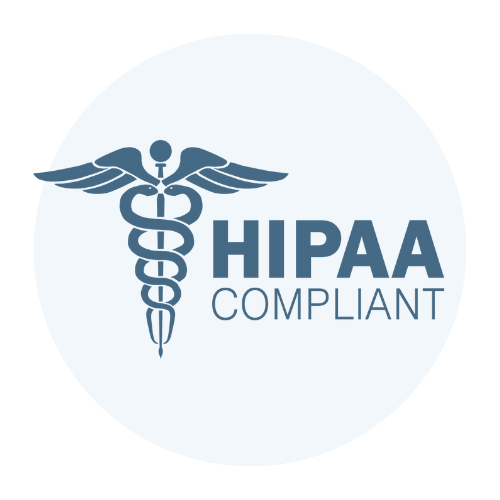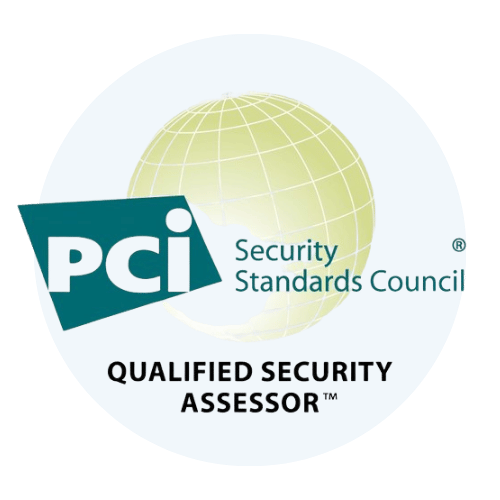TrustNet: Your Ally in Achieving Cybersecurity Compliance
In an era where digital threats are ever-evolving, TrustNet emerges as a trusted partner committed to fortifying your cybersecurity posture. We provide robust cybersecurity solutions and compliance services to safeguard your digital assets while ensuring regulatory adherence. As businesses increasingly migrate their operations online, the need for stringent cybersecurity compliance has never been more critical. With TrustNet by your side, navigate the complex terrain of cybersecurity confidently. We are not just a service provider but a reliable ally in your journey toward achieving and maintaining cybersecurity compliance in today’s dynamic digital landscape. TrustNet’s Expertise and Services With a wealth of experience and a global footprint, TrustNet has positioned itself as a leading authority in the cybersecurity landscape. Our expertise spans across industries, offering comprehensive, custom-tailored solutions to businesses of all sizes. TrustNet’s offerings encompass various services, including managed security services, consulting, and compliance management solutions. Our managed security services deliver round-the-clock monitoring and threat mitigation, while our consulting services provide actionable insights and strategies to bolster your cybersecurity framework. At the heart of our service suite is TrustNet’s Compliance Management Platform. This innovative solution simplifies the complex task of managing regulatory compliance. It provides real-time visibility into your compliance status, automates processes, and assists in identifying and mitigating risks. Unique to TrustNet is our TSOC (TrustNet Security Operations Center) and CISO (Chief Information Security Officer) as a service offering. The TSOC utilizes SOC as a service, red team capabilities, and provides continuous surveillance to ensure the safety of your digital assets. CISO as a service, also known as Virtual Chief Information Security Officer (vCISO), is another standout offering from TrustNet. The vCISO has the necessary expertise and tools to keep your company’s information security up-to-date as it expands and changes. TrustNet was recognized with the “Editor’s Choice in Managed Security Service Provider (MSSP)” award at the 10th Annual Global InfoSec Awards in 2022. TrustNet’s diverse service portfolio and innovative approaches ensure that your business remains resilient in the face of evolving cyber threats. For more on our cybersecurity and compliance services, Click Here TrustNet’s Role in Achieving Compliance TrustNet’s role in maintaining regulatory compliance cannot be overstated. Regulatory compliance is more than just ticking boxes; it’s about building a culture of security and privacy. TrustNet’s approach ensures that compliance is integrated into your business operations. Our expertise spans numerous regulations such as GDPR, HIPAA, PCI DSS, and ISO 270011. By offering comprehensive assessment services, TrustNet ensures businesses are compliant and understand the nuances of these complex frameworks. TrustNet’s services are also instrumental in risk management. We identify potential vulnerabilities, assess their impact, and provide mitigation strategies. This proactive approach to risk management helps businesses stay ahead of threats and reduce the likelihood of breaches. Moreover, TrustNet provides solution specifications tailored to each business’s unique needs. Our solutions are designed to address specific pain points and bolster overall security posture. Case Studies and Success Stories TrustNet has a robust history of assisting businesses in strengthening their cybersecurity posture and achieving compliance. One notable example is Calendly, a globally recognized CRM and meeting scheduling company. TrustNet aided Calendly in implementing NIST Risk Assessment, HIPAA, SOC 2, and ISO 27001 frameworks. These efforts significantly enhanced their cybersecurity and compliance status. Similarly, Optima Tax Relief, a leading tax resolution firm, partnered with TrustNet to upgrade its IT security infrastructure. TrustNet initiated the process with a comprehensive technology audit, identifying areas of improvement and implementing necessary upgrades. This not only enhanced Optima’s data security but also ensured better compliance. Careington, another client of TrustNet, also benefited greatly from our services. We helped Careington strengthen its security measures, prioritize risk management, and achieve regulatory compliance. The enhanced cybersecurity measures and compliance status have bolstered the customers’ confidence in these companies’ ability to protect their data. This safety assurance translates into a more substantial brand reputation, fostering deeper customer trust. The subsequent increase in customer loyalty and satisfaction is invaluable, driving growth and profitability while ensuring the longevity and resilience of the business in the increasingly competitive digital landscape. Conclusion In today’s digital landscape, cybersecurity and compliance are more important than ever. TrustNet is a reliable ally in bolstering cybersecurity and achieving compliance. Our strategic approach and tailored solutions have greatly enhanced the security posture of many businesses, fostering increased customer trust. Moreover, maintaining robust cybersecurity measures and compliance is not optional but essential to business survival. As such, businesses should seize the opportunity to fortify their defenses and assure regulatory adherence by partnering with TrustNet, the trusted expert in cybersecurity and compliance.
How Does Open Source Data Change The Cyberdefense Game (Open Source Data Summit 2023)
The Open Source Data Summit 2023 was a live virtual summit held on November 15th, 2023. This premier event united open-source developers, technologists, and community leaders to collaborate, share information, and solve real-world problems. Open source data refers to data that anyone can freely use, modify, and share for any purpose. It’s a type of data available in the public domain, allowing individuals and organizations alike to access and utilize it. When it comes to cybersecurity, open-source data plays a crucial role. For instance, threat intelligence data can be gathered from various open sources and analyzed to predict and prevent potential cyber threats. Building off the insights shared at the Open Source Data Summit 2023, TrustNet’s expertise in cybersecurity and compliance is particularly relevant. With open-source data now a key component of cyber defense strategies, TrustNet’s advanced capabilities can help organizations leverage this information effectively and securely. Why Individuals and Businesses Should Care About Extending Knowledge of Open Source Data The importance of understanding open-source data extends to both individuals and businesses operating in today’s digital landscape. Here are some key reasons why increasing knowledge in this area is crucial: Enhances Innovation: Open-source data promotes innovation by providing resources that can be built upon. For businesses, this can lead to the development of new products or services. For individuals, it can spark creativity and foster learning. Encourages Collaboration: Open-source data fosters a sense of community, encouraging collaboration across geographical and organizational boundaries. This can lead to more robust solutions and shared problem-solving. Reduces Costs: Using open-source software can drastically reduce costs for businesses as it often comes free of charge. Individuals can also benefit from free access to tools and information. Improves Skills: Knowledge of open-source data can enhance an individual’s technical skills, making them more marketable in the job market. For businesses, having employees skilled in open source can lead to more efficient and innovative use of technology. Ensures Transparency: Open-source data is transparent, meaning users can see how it works and modify it to suit their needs. This can lead to greater trust and reliability for businesses and individuals alike. Promotes Freedom and Flexibility: Unlike proprietary software, open-source software allows users to customize and control their computing. This can result in more tailored solutions for both businesses and individuals. Helps Mitigate Risks: Understanding open-source data can help businesses and individuals identify potential risks and vulnerabilities. This knowledge can be vital in preventing cyber-attacks and ensuring data security. The Vulnerabilities of Open Source Data Open-source data and software have several vulnerabilities that users must be aware of. One significant risk is the security threat posed due to the open nature of the software. Since anyone can view and modify the source code, it leaves room for malicious actors to exploit any weaknesses and launch cyber-attacks. Another area for improvement lies in the quality assurance of open-source projects. These projects are often managed by communities of developers, leading to variations in code quality. Furthermore, the maintenance and updates of open-source projects can sometimes be irregular, exposing them to new threats. Conducting a thorough and effective security audit can also be challenging. Moreover, a common challenge with open-source software is its dependency on community support for problem-solving and troubleshooting. If the community backing the project is small or active, users might find it easier to get help when issues arise. Lastly, misunderstandings or misuse of open-source licenses can result in legal complications. Also, most open-source software doesn’t come with a warranty. Users are solely responsible for any issues that may arise. Where Does Data Governance and Compliance Come In In the context of open source, data governance can help ensure that the data is accurate, consistent, and secure. This can mitigate some of the risks associated with open-source data. On the other hand, compliance refers to ensuring that an organization’s data practices meet established regulations and standards. Depending on the nature of the data and the industry, these may include regulations such as the General Data Protection Regulation (GDPR), the California Consumer Privacy Act (CCPA), or the Health Insurance Portability and Accountability Act (HIPAA). TrustNet’s Data Security Strategy can be a game-changer in this context. Our strategy is designed to address these challenges head-on. It involves implementing robust security measures, including advanced encryption and stringent access controls. These aim to protect organizations against potential cyber threats. TrustNet also focuses on maintaining high data quality and consistency standards, which are essential for the effective use of open-source data. Moreover, we ensure regular updates and data maintenance, reducing the risk of vulnerabilities. Conclusion In conclusion, using open-source data, while beneficial in many aspects, comes with challenges and vulnerabilities. However, these risks can be mitigated with adequate data governance and compliance. TrustNet provides a comprehensive solution to address these challenges, ensuring that the potential of open-source data can be harnessed securely and effectively.
Cybersecurity in Education: The Guardian of Student Data
Data has become one of the most valuable assets in the digital age, which is especially true in the education sector. This is where student data, from personal information to academic records, is stored and managed. However, with the increasing reliance on technology in educational institutions, this data is becoming more vulnerable to cyber threats. However, implementing effective cybersecurity measures in educational institutions takes a lot of work. It requires a comprehensive approach that includes using advanced security tools, regular training of staff and students about online threats, and the development of solid policies and procedures for data management. In the following sections, we will delve deeper into the importance of cybersecurity in education, the risks it mitigates, and how it can be effectively implemented to protect student data. Understanding Cybersecurity Risks in Education Data breaches are among the most common cybersecurity threats faced by educational institutions. These occur when a cyber attacker gains unauthorized access to internal files and databases, compromising sensitive or personal information. Schools hold a wealth of personal data on students, staff, and parents, making them attractive targets for cybercriminals. Ransomware Attacks Ransomware attacks are another significant cybersecurity risk. In such attacks, malicious software encrypts a school’s data, rendering it inaccessible until a ransom is paid. This can disrupt learning, particularly in a remote learning environment where digital platforms are essential for delivering lessons and resources. Phishing Scams Phishing scams and social engineering techniques represent further risks. These involve deceptive practices that manipulate individuals into revealing confidential information, such as login credentials. Cybercriminals often target academic institutions with these attempts, exploiting the trust and authority of teachers. DDoS and Zoom Bombing Distributed Denial of Service (DDoS) attacks and ‘Zoom Bombing’ have also emerged as significant threats in the era of remote learning. DDoS attacks overload a school’s network, slowing access and rendering systems inaccessible, while ‘Zoom Bombing’ involves unwanted, disruptive intrusions into virtual classrooms. The potential impacts of these cyberattacks are far-reaching. Beyond compromising student data, they can disrupt learning, undermine trust in educational institutions, and even compromise student safety. The Importance of SOC 2 Compliance in Education In the world of cybersecurity, SOC 2 (System and Organization Controls) compliance has emerged as a crucial standard for ensuring the security and privacy of data. For educational institutions, achieving SOC 2 compliance provides the highest level of data security and builds trust among students, parents, and staff. Given the growing prevalence of cyber threats, from data breaches to ransomware attacks, robust security controls are critical. By adhering to SOC 2 guidelines, schools can ensure that they have efficient and effective systems for protecting student data. Another significant advantage is the increased level of trust it engenders. With growing concerns about data privacy, students and their families want assurance that their personal information is handled responsibly. Schools that achieve SOC 2 compliance can provide this assurance, demonstrating their commitment to protecting student data. Finally, SOC 2 compliance can also aid in regulatory compliance. Many jurisdictions have laws requiring educational institutions to protect student data. By meeting SOC 2 standards, schools can ensure they abide by these legal requirements. TrustNet’s Role in Education Cybersecurity TrustNet is a leading provider of cybersecurity services, specializing in helping organizations protect their data and achieve compliance with various security standards. TrustNet offers several services to bolster cybersecurity in educational institutions: SOC 2 Compliance: TrustNet aids schools in attaining SOC 2 compliance, a crucial standard for managing customer data. Our readiness assessments help identify current compliance levels and areas needing improvement. Penetration Testing: To identify potential vulnerabilities in an institution’s systems and networks, TrustNet conducts comprehensive penetration tests. Cybersecurity Training: TrustNet provides training programs to boost staff awareness about cybersecurity threats and best practices. Incident Response: TrustNet assists institutions in formulating robust incident response plans, ensuring they are well-prepared to tackle any cybersecurity incidents. Overall, TrustNet’s broad suite of services helps institutions comply with essential standards like SOC 2 and fortifies their overall security defenses. For more on our SOC 2 services, Click Here Best Practices for Enhancing Cybersecurity in Education Here are some of the best practices for enhancing cybersecurity in educational institutions: Employee Training One of the most effective ways to enhance cybersecurity is through employee training. Staff should be educated about potential cyber threats, such as phishing scams and ransomware attacks, and trained to respond appropriately. This includes being cautious about opening suspicious emails, avoiding clicking on unknown links, and reporting unusual activity to the IT department. Network Protection Protecting the network is another critical aspect of cybersecurity. This involves monitoring the network for unusual activity, securing traffic to and from the Internet, and improving network authentication. Firewalls, intrusion detection systems, and secure Wi-Fi networks can also help shield against potential attacks. Up-to-Date Security Software Keeping security software up-to-date is essential for protecting against the latest threats. This includes regularly updating antivirus software, operating systems, and applications. Regular security audits can also help identify any vulnerabilities that must be addressed. All these measures contribute to protecting student data. By implementing these best practices, schools can safeguard sensitive information, maintain a secure learning environment, and instill confidence among students and parents. The Benefits of TrustNet’s Cybersecurity Solutions for Educational Institutions TrustNet’s cybersecurity solutions provide several key benefits to educational institutions. Here’s an overview: Enhanced Security: TrustNet’s cybersecurity solutions protect educational institutions from various threats, providing improved security and peace of mind. Simplified Compliance Process: TrustNet helps schools navigate complex regulatory landscapes. Our readiness assessments, gap analysis, and remediation guidance simplify achieving and maintaining compliance. Regulatory Updates: Compliance regulations evolve. TrustNet keeps institutions updated on these changes, helping them maintain compliance and avoid penalties. Risk Management: TrustNet helps institutions understand and manage their cybersecurity risks better. We provide them with the tools to make informed decisions about resource allocation and risk mitigation strategies. Cost Savings: By preventing data breaches and ensuring compliance, TrustNet’s solutions can result in significant cost savings for educational institutions. The cost of a data breach or non-compliance
Cybersecurity and Business Reputation: An Indivisible Duo
In today’s highly digitized business landscape, the strength and effectiveness of a company’s cybersecurity measures can significantly impact its reputation among customers, stakeholders, and within the broader marketplace. Robust cybersecurity not only safeguards a business’s operational and financial data but also plays a pivotal role in preserving its reputation. Conversely, a company’s reputation is a valuable asset influencing customer loyalty, stakeholder trust, and competitive positioning. We’ll explore how robust security measures are crucial in maintaining and enhancing a brand’s integrity. We’ll also examine the potential repercussions of cybersecurity breaches on a business’s reputation and discuss strategies for proactive cybersecurity that can help mitigate these risks. Understanding Cybersecurity and Its Importance for Business Reputation Cybersecurity refers to the measures taken to protect Internet-connected systems, including hardware, software, and data, from cyber threats. These threats can take many forms, from hackers seeking to steal sensitive information to malware that disrupts business operations. The significance of cybersecurity for businesses is multi-faceted. First, it protects valuable business assets, including customer information, financial data, and intellectual property. Failure to protect these assets can lead to significant financial losses, legal repercussions, and damage to a company’s reputation. Moreover, robust cybersecurity practices ensure business continuity. By preventing or minimizing cyber-attacks, companies can ensure their operations continue smoothly. Most importantly, effective cybersecurity is crucial for maintaining and enhancing business reputation. A company’s reputation is one of its most valuable assets. It shapes how customers, employees, and stakeholders perceive the company and can directly impact its bottom line. However, a cybersecurity breach can severely damage a company’s reputation. Such incidents can lead to loss of customer trust, negative media coverage, and even regulatory fines. Customers may hesitate to do business with a company they perceive as insecure, while potential partners may think twice about forming alliances. The Impact of Cybersecurity Breaches on Business Reputation Cybersecurity breaches can have a devastating impact on a business’s reputation. The fallout from such incidents can be immediate and far-reaching. This affects everything from customer trust to market value. A study revealed that the most significant and noticeable breaches could lead to a 5-9% decline in reputational intangible capital. This highlights the potential long-term impact of cybersecurity breaches on a company’s reputation. Moreover, small businesses are particularly vulnerable to the potentially catastrophic effects of cybersecurity breaches. A data breach can irreparably harm a small business’s reputation, especially those not financially stable. In some cases, nearly 60% of companies affected by a data breach will likely go out of business due to reputational damage. One high-profile example is the 2013 Target data breach, where the credit and debit card information and records of up to 110 million customers were stolen. The breach led to a significant loss of customer trust and decreased sales, ultimately costing the company over $200 million. The Role of Cybersecurity in Building and Maintaining Business Reputation Trust forms the bedrock of any business-customer relationship. Customers need to feel confident that their personal and financial information is secure when they engage with a business. Any breach of this trust, such as through a data leak or cyberattack, can damage a company’s reputation and potentially lead to loss of business. Cybersecurity plays a pivotal role in building this trust. A business can demonstrate its commitment to protecting customer data by implementing comprehensive and proactive security measures. This can attract new customers and foster loyalty among existing ones. Moreover, strong cybersecurity practices can also build trust with investors. In today’s digitized world, investors are increasingly aware of the risks associated with cyber threats. They are likely to view companies with robust cybersecurity measures more favorably. Best Practices for Enhancing Cybersecurity and Protecting Business Reputation Enhancing cybersecurity and protecting a business’s reputation requires a multi-faceted approach encompassing various best practices. Here are some of the most effective strategies: Employee Training: Employees are often the first line of defense against cyber threats. Therefore, it’s essential to train them in security principles. This includes teaching them how to recognize suspicious emails or links, the importance of using strong passwords, and the need to avoid sharing sensitive information. Protect Information and Networks: Businesses must protect their information, computers, and networks from cyber-attacks. This can be achieved by installing antivirus software, regularly updating systems and software, and using firewalls and encryption for data protection. Regular Updates and Backups: Keeping all software and systems updated is crucial as updates often include patches for known security vulnerabilities3. Regularly backing up data can also help businesses recover quickly during a breach. Enforce Security Policies: Businesses should have clear, enforceable security policies. These policies should cover areas like acceptable use of company systems, incident reporting, and consequences for policy violations. Invest in Cybersecurity Measures: Investing in robust cybersecurity measures, such as unsecured network protection and comprehensive IT services with experts like TrustNet, can further enhance a business’s security posture. Good cybersecurity practices are not just about preventing attacks; they’re about safeguarding a company’s reputation in an increasingly digital world. Conclusion As cyber threats evolve, trust from customers, partners, and stakeholders depends on the assurance of secure data. A breach risks sensitive information and harms a company’s public standing. As businesses navigate the digital landscape, prioritizing cybersecurity measures is crucial—it’s the key to protecting and boosting a business’s reputation in our connected and data-driven world.
Health Is Wealth, Even In Data Security (Official Cyber Security Healthcare & Pharma Summit)
In today’s digital world, the need for robust cybersecurity measures is critical. This is especially true in the healthcare and pharmaceutical sectors. Essential data and infrastructure must be secure from ever-evolving cyber threats, and it’s no small task. That’s where the Official Cyber Security Healthcare & Pharma Summit, held last 20 October, comes in. This national virtual conference brought together industry leaders who explored innovative solutions for protecting critical assets within the healthcare domain. TrustNet’s expertise in assessing risks, managing them effectively, and ensuring regulatory compliance is instrumental in simplifying cybersecurity practices across industries, particularly in the critical healthcare sector. Understanding Cybersecurity in Healthcare Healthcare organizations hold many sensitive patient information. This includes medical records, financial details, and personal data. These institutions are also responsible for protecting their patients’ privacy and ensuring their systems are secure from cyber-attacks. Some of the critical aspects of healthcare that require cybersecurity measures include: Electronic Health Records (EHR) – These systems store patient information, such as medical histories, diagnoses, and treatment plans, in digital form. These records contain susceptible information that needs to be kept confidential. Online Healthcare Plan Enrollment Systems – These allow patients to enroll in health plans, change their coverage, and view their benefits online. They must be protected from cyber-attacks to prevent unauthorized access and data breaches. Mobile Connectivity in Healthcare – Healthcare organizations increasingly use mobile devices to access patient information, communicate with other healthcare professionals, and perform administrative tasks. Using mobile devices creates additional security risks, as these devices can be lost or stolen. E-Prescription Kiosks – These kiosks allow patients to fill prescriptions quickly and efficiently. However, they also require cybersecurity measures to protect patient information from being compromised. Online Procurement Systems – These allow healthcare providers to purchase medical equipment, supplies, and drugs online. Cybercriminals can target these systems to access supply chains, steal intellectual property, or disrupt operations. By securing these key avenues, healthcare organizations can prevent data breaches. They can also protect patient privacy, and ensure the safety of their infrastructure. Understanding and addressing unique challenges and vulnerabilities in healthcare is paramount with the rise in cyberattacks. Healthcare and Compliance Compliance is a critical component of cybersecurity in healthcare. There are various compliance services available that healthcare organizations should consider to ensure they meet all the requirements. HIPAA HIPAA, or the Health Insurance Portability and Accountability Act covers everything from how medical records are stored and accessed to the transmission of electronic health data. TrustNet’s expertise can fortify HIPAA compliance, helping organizations set stringent guidelines that protect patient rights. GDPR GDPR, or the General Data Protection Regulation empowers individuals with data control. TrustNet offers comprehensive support for GDPR compliance that emphasizes transparency, explicit consent, and data security. Pen Testing and Risk Assessment Concerted efforts rather than compliance are necessary in the ever-escalating battle against cyber threats. Healthcare organizations must be proactive in identifying vulnerabilities and mitigating risks. TrustNet’s long-time expertise in assisting and elevating cybersecurity risk awareness helps empower healthcare organizations with a roadmap to proactively bolster security measures and mitigate risks effectively. Conclusion The safeguarding of sensitive patient data and the preservation of a secure healthcare infrastructure must take precedence as healthcare organizations navigate the complex digital landscape. In an era where the convergence of healthcare and technology is ever more apparent, a robust commitment to cybersecurity not only secures data but also ensures the well-being and trust of patients, thus underlining its importance in the healthcare realm. Ready to enhance your cybersecurity and compliance? Schedule a call with us today.
ISO 27001: The Healthcare Cybersecurity Game Changer
For healthcare organizations, complying with ISO 27001 isn’t just about meeting a regulatory requirement but also safeguarding patient trust and ensuring their safety. It assists healthcare providers in identifying system vulnerabilities, mitigating risks, and protecting patient data from breaches. Furthermore, ISO 27001 fosters a culture of security within the organization, ensuring that everyone understands their role in maintaining information security. This approach significantly reduces the chances of internal breaches, often due to human errors. It also promotes a proactive, well-informed workforce contributing to a resilient cybersecurity framework. TrustNet, a leading provider of cybersecurity services, recognizes the unique challenges faced by the healthcare sector. We offer specialized services to help healthcare organizations implement and maintain compliance with ISO 27001. Understanding ISO 27001 and Its Importance in Healthcare ISO 27001 is an internationally recognized information security management system (ISMS) standard. Over the past decade, it has evolved into a globally acknowledged benchmark for data protection. It provides a systematic and structured approach to securing sensitive company information, making it particularly significant for healthcare organizations. In the healthcare sector, where important patient data needs to be securely shared across departments and external organizations, the ISO 27001 standard plays a crucial role. It helps these organizations identify risk areas, apply necessary controls, and safeguard confidential medical records. However, the benefits of ISO 27001 go beyond mere compliance or data protection. ISO 27001 certification sends a strong message to the public and stakeholders that their sensitive information is taken seriously and handled with utmost care. This enhances trust, which is a crucial factor in the patient-provider relationship. The Role of TrustNet in ISO 27001 Compliance In pursuing enhancing cybersecurity measures and managing information risks more effectively, many healthcare organizations are turning towards ISO 27001 certification. As a leading provider of governance, risk, and compliance services, TrustNet plays a pivotal role in this journey. TrustNet offers comprehensive ISO 27001 certification services, guiding organizations through every certification process step. Our services include an initial gap assessment to identify areas where the organization does not meet the standard’s requirements. This is followed by a thorough risk assessment to understand potential security threats to the organization. Once the assessments are complete, TrustNet assists organizations in implementing the necessary controls to mitigate identified risks and address the gaps. We provide continuous support to ensure the implemented Information Security Management System (ISMS) remains practical and current with evolving cybersecurity threats. Achieving ISO 27001 certification can be complex, especially for healthcare organizations dealing with susceptible patient data. TrustNet simplifies this process by providing expert guidance and practical solutions tailored to each organization’s specific needs and context. With TrustNet’s assistance, healthcare organizations can navigate the certification process with greater confidence and ease. They will learn how to manage their information security to align with international standards, thus ensuring robust protection against cyber threats. By partnering with TrustNet, healthcare organizations gain a trusted advisor who can help them not only achieve ISO 27001 certification but also maintain it over time. For more info on our SOC 2 reports, click here. The Process of Implementing ISO 27001 Implementing ISO 27001 involves several key steps: 1. Assemble an Implementation Team: The first step is forming a team that will be responsible for the implementation of the ISMS. This team should include representatives from different areas of the organization to ensure all aspects of information security are considered. 2. Develop the Implementation Plan: The team then develops a plan detailing how the ISMS will be implemented. This includes defining objectives, determining resources needed, and setting a timeline. 3. Initiate the ISMS: The ISMS is formally initiated, and the implementation team begins their work. This includes gaining a thorough understanding of ISO 27001 requirements. 4. Define the ISMS Scope: The scope of the ISMS needs to be clearly defined. This includes identifying which information, departments, locations, and assets will be covered by the ISMS. 5. Perform a Security Risk Assessment: A critical part of the process is conducting a risk assessment. This involves identifying potential threats and vulnerabilities, assessing the impact and likelihood of these risks, and prioritizing them based on their severity. 6. Manage the Identified Risks: Once risks have been identified and assessed, suitable controls need to be selected and implemented to manage these risks. From assembling the implementation team to defining the ISMS scope, TrustNet can offer expert guidance and support. We can help conduct a thorough security risk assessment, identifying and appropriately addressing all potential vulnerabilities. TrustNet’s ISO 27001 services follow a structured approach, encompassing project planning and management, scoping involving risk assessment and control identification, testing through analysis and remediation roadmap creation, and reporting with comprehensive findings and recommendations. The Benefits of ISO 27001 Certification for Healthcare Organizations Here are the key benefits of ISO 27001 certification: ● Safeguarding Patient Data: ISO 27001 ensures that patient information is protected from unauthorized access, disclosure, alteration, or destruction. ● Compliance with Regulatory Requirements: ISO 27001 certification helps healthcare organizations comply with various regulatory requirements, such as HIPAA, GDPR, etc. ● Gaining a Competitive Advantage: An ISO 27001 certification can demonstrate to patients and other stakeholders that the organization takes information security seriously, enhancing trust and reputation. ● Risk Management: Regular risk assessments are vital to ISO 27001 certification. These assessments help identify potential vulnerabilities and threats to the organization’s information security. With the guidance and support of experts like TrustNet, achieving this certification and reaping its benefits becomes much more streamlined and manageable. Conclusion ISO 27001 plays a pivotal role in fortifying the information security posture of healthcare organizations. This certification ensures sensitive patient data’s confidentiality, integrity, and availability. In an era where data security is critical, TrustNet’s role in facilitating and sustaining ISO 27001 compliance becomes indispensable for enhancing healthcare organizations’ resilience, trustworthiness, and overall cybersecurity effectiveness.
ISO 27001: Enhancing Cybersecurity in the Oil Industry

Compliance standards help oil and gas companies to develop cyber resilience and build customer trust. Here’s how they make the most of an ISO 27001 certification.
Phishing 2024: How to Protect Your Business from New Hacker Tactics

Phishing sounds petty but it exacts a heavy price. It has led to devastating financial losses, prolonged business stoppages, serious reputational harm, and clueless people getting fired (including executives).
How to Get the Most Benefits from US Cybersecurity Conferences in 2023-2024

This article gives a brief overview of the main types of cybersecurity conferences in the U.S. and highlight some of the most influential ones for 2023 -2024. It also shares some practical tips on how to make the most of your conference experience.
Mergers and Acquisitions: The Need for Cybersecurity Due Diligence

Cybersecurity due diligence is the rigorous evaluation of a company’s information security practices, vulnerabilities, and risk exposure — and their impact on a major business deal such as a merger or investment round. The process helps identify weaknesses and gaps that could compromise the success or value of the deal; or undermine the security, reputation, and legal compliance of the parties involved. Talk to our experts today! In mergers and acquisitions (M&A), cybersecurity due diligence ensures that a company has adequate visibility and insight into the potential risks associated with the organization they intend to acquire or merge with. It involves the careful review of the organization’s policies, networks, systems, and controls to understand emergent risks and mitigate potential threats to the other parties that could arise during and after the deal has been completed. Enabling a more accurate assessment of risks and business value, cybersecurity due diligence enhances decision-making on many levels and has become an essential tool in M&A. Understanding Mergers and Acquisitions Mergers and acquisitions are major transactions where the ownership of companies, business units, or their assets are transferred or consolidated. Among other things, M&A enables organizations to acquire new capabilities, achieve economies of scale, diversify their portfolios, or enter new markets. Mergers refer to the consolidation of two or more similarly sized firms into one new entity. On the other hand, acquisitions involve the purchase of one company (the target) by another (the acquirer) to gain control over the target’s resources. While delivering many strategic advantages, M&A also involves significant challenges, such as valuation errors, integration issues, regulatory hurdles, and security risks. Numerous studies and experts rank data breaches and other cyberattacks among the most (if not the top) existential risks today’s businesses face. For companies involved in an M&A deal, addressing this challenge is paramount. And performing cybersecurity due diligence is the first step to do so. How Cybersecurity Due Diligence Improves the M&A Process Much of the security risk faced by today’s businesses stems from the continued adoption of traditional cybersecurity approaches and legacy solutions. Largely reactive, these approaches rely on predefined rules and signatures to detect and respond to threats. However, these approaches have proven ineffective in addressing new and unknown forms of cyberattacks. For one, a reactive approach acts only after a security incident occurs, which can result in data compromise, financial damage, and reputational harm. To adequately protect their information systems and digital assets, companies must complement their conventional security tools with a more proactive and adaptive approach to cybersecurity. One that can anticipate and thwart potential threats before they compromise a system. To do that requires advanced technologies and adaptive processes that leverage artificial intelligence, machine learning, and automation to continuously monitor, analyze, and respond to the evolving threat environment. Cybersecurity due diligence forms an integral part of a proactive risk management strategy. It enables companies to make an objective assessment of their security and compliance posture; identify cyber risks, and proactively remediate weaknesses and vulnerabilities before they become or cause major problems. Key Components of Cybersecurity Due Diligence Cybersecurity due diligence can have many moving parts. The following are its key elements: Asset Identification — involves determining relevant business objectives and the resources needed to achieve each of those objectives. Includes hardware, software, data, networks, third-party services, and personnel. Threat Analysis — involves identifying potential threats that could compromise the confidentiality, integrity, and availability of identified assets. Analyzes the likelihood and impact of such threats. Vulnerability Assessment — involves a comprehensive evaluation of the target company’s IT ecosystem to identify existing vulnerabilities, flaws, and security gaps. Risk Mitigation — involves the development and implementation of a remediation roadmap to address the identified risks and improve security measures. Monitoring and Reporting — involves the continuous tracking and assessment of the effectiveness of remediated security measures. Benefits of Cybersecurity Due Diligence in Mergers and Acquisitions Cybersecurity due diligence provides the following advantages: Real-time Risk Awareness — Parties gain a better understanding of a subject company’s current cyber risk exposure, allowing for more informed decision-making and resource allocation. This helps prevent unpleasant surprises, such as hidden liabilities, data breaches, or regulatory fines, that may affect the viability or value of a deal. Improved M&A Management — Continuous monitoring and evaluation enable organizations to detect and respond to cyber threats more effectively, minimizing the potential impact of security incidents during the M&A process. This also facilitates the safe integration of the subject company’s systems, processes, and policies, ensuring a smooth and secure transition. Enhanced Compliance — Ongoing assessment and improvement efforts help organizations maintain compliance with relevant laws, regulations, and industry standards. This reduces the risk of legal or reputational damage and increases the trust and confidence of customers, partners, and regulators. Challenges and Solutions Performing due diligence is a crucial process in M&A. But its actual execution can face several challenges and limitations: Resource requirements. Conducting the process requires significant time, money, and expertise. This may strain the resources of one or more parties (acquirer, target, equal partners, etc.) especially if they have different levels of cyber maturity and sophistication. Data privacy and security. The process may involve the handling of sensitive and confidential data (such as customer information, IP, and financial records). This may expose parties to data privacy and security risks. Moreover, the data may be subject to legal or regulatory obligations that may limit or prohibit its disclosure or use. Organizational culture. A due diligence process may uncover differences in the organizational culture and values of the participating entities, especially regarding their mindset and approaches to cyber risk management. This may create challenges in aligning their strategies, policies, and practices. It may also cause hurdles in fostering trust and collaboration among their staff and other stakeholders. Talk to our experts today! M&A challenges can be daunting but there are viable solutions to many issues you might encounter. For example, a reliable cyber risk rating service can significantly streamline the process and reduce the cost of due diligence



